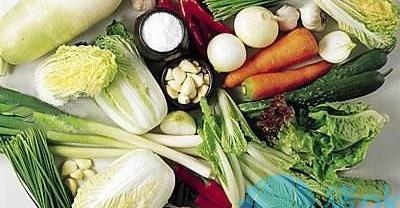Field management technology of papaya
Papaya is a new type of fruit introduced from South America, but it has become a popular fruit in our market. In fact, the taste of papaya is not very good, raw food still has a certain astringent taste, but because of its high nutritional value, sales in the market are still very good. Papaya is widely distributed in China, such as Shandong, Shaanxi, Jiangsu, Zhejiang, Guangdong and other places. So what we are going to learn today is the field management skills of papaya. Let's take a look.

1. Watering
Papaya needs to be watered once after planting, and the water demand in the later stage is not very large, although papaya is a wetting plant. We in the usual planting process, especially in the rainy season, or rainy season, should be timely drainage, to avoid stagnant water in the field, affecting the normal growth of papaya, but in the drought, also need timely watering. The water demand of papaya in flowering and fruiting period is relatively large, so we should pay attention to watering in these two periods to ensure an adequate water supply.
2. Fertilization
Papaya needs a large amount of fertilizer, before the planting of papaya, we should re-apply base fertilizer, and after papaya survives, we should carry out appropriate topdressing to promote the growth of young trees. If topdressing is too late, it will affect the tree potential of papaya and lead to poor growth and development, thus affecting the yield of papaya. Secondly, after papaya blossoms and bears fruit, we need to top fertilizer in four steps, namely, growth fertilizer, flower-promoting fertilizer, strong fruit fertilizer and base fertilizer. When fertilizing, we also need to pay attention to avoid nutrient damage to the root system of papaya, generally using the way of ditching ring fertilization outside the root.
3. Cultivate the soil
In the growth process of papaya, we need to cultivate the soil twice a year, which can not only enhance the soil permeability, but also conducive to nutrient absorption and water supply, and improve the utilization rate of nutrients. In addition, when ploughing and cultivating the soil, we have to clean up the weeds in the field. Ploughing and cultivating the soil is usually after each watering, or after the rain clears up, which can prevent the soil from hardening and affect the growth of papaya.
4. Pruning
Proper pruning of branches and leaves of papaya trees is also very necessary, which is directly related to the yield and quality of papaya. In general, we will prune the over-dense branches, weak branches, disease and insect branches of papaya, and retain strong and healthy branches, so that the papaya tree can be trimmed into cups, inner and outer circles and other shapes, which is conducive to the growth of papaya branches. so as to increase the amount of blossom and fruit.
5. Fruit thinning
Fruit thinning is a point that many people will ignore in the planting process, at the same time, many growers are reluctant to carry out fruit thinning, feeling that the fruit is economic loss. In fact, if the excess fruit is not removed, the loss will be even greater. Therefore, when the papaya fruit is set, we should remove the relatively weak, dense fruit, abnormal fruit and retain the strong fruit, so as to ensure the supply of nutrients and improve the yield and quality of papaya.
The above is the editor's understanding of papaya field management technology, of course, we also need to pay attention to pest control and other problems in the process of planting, but if the above problems can be solved, the planted papaya is basically of very high quality.
- Prev

Fruit growers grow exotic melons and fruits that resemble the arms of the Hulk.
Fruit growers plant exotic melons and fruits, which resemble the hulk arms and the hulk, and indeed resemble the fruit growers who just bear fruit in purple buds.
- Next

Watermelon planting techniques: watermelon planting method and time, how long it takes from flowering to ripening and post-fruiting management
What should be paid attention to when growing watermelons?
Related
- Moge, come on! The staff of the peasant association in the producing area of cantaloupe were frightened when the crowd gathered.
- Causes and Solutions of low Fruit setting rate of Apple
- Symptoms and control measures of passion fruit virus disease
- Fruit growing lesson: how do apple orchards keep high yields?
- Can you build orchards in the mountains? What are the pros and cons?
- How to manage the coloring period of Crisson grape?
- This paper introduces the processing technology of two kinds of fig products.
- How much is a month for retired teachers in rural areas by 2020?
- How can strawberry planting increase sugar content? We should pay attention to management in many aspects.
- What are the cultivation techniques on how to improve the yield of golden fruit?

